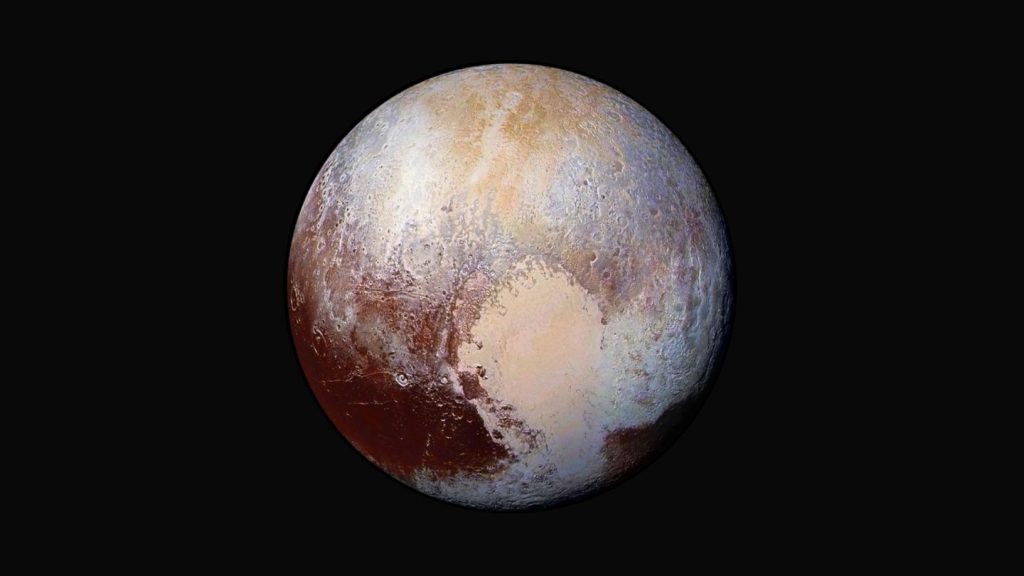Pluto’s heart-shaped feature, Sputnik Planitia, may have been created by a massive impact billions of years ago, according to researchers who suggest that an object about 730 kilometers wide collided with the dwarf planet, leaving behind a rocky remnant that formed the basin. The basin, located across Pluto’s equator, is believed to be an impact basin due to the characteristic shape it has created on the planet’s surface. However, the equatorial location of the basin is puzzling, as such an impact would typically cause instability in the planet’s tilt over time.
Some scientists have proposed that the impact that created Sputnik Planitia also created a subterranean ocean on Pluto, which has kept the basin at the equator. The presence of a liquid ocean would help explain why the heart-shaped feature remains at the equator despite the challenges of surviving in such harsh conditions. However, the idea of an ocean on Pluto has faced challenges due to the extreme cold temperatures on the planet, which make the existence of liquid water unlikely.
To explore an alternative explanation for Sputnik Planitia, researchers conducted computer simulations to investigate the effects of different-sized rocky objects colliding with Pluto. They found that a space rock approximately 730 kilometers in diameter could create a dense core surrounded by lighter materials upon impact. The heavy core could have settled below the surface of Sputnik Planitia, helping to stabilize the heart-shaped feature and prevent it from moving over time. This alternative model offers a new perspective on the formation of Pluto’s unique features.
The idea of a rocky impactor creating a dense core below Sputnik Planitia provides an important insight into the possible origins of the basin. This alternative model challenges the notion of Pluto having a subterranean ocean and offers a different explanation for the presence of the heart-shaped feature on the dwarf planet’s surface. While the debate over the existence of an ocean on Pluto continues, exploring alternative theories will be essential in understanding the planet’s geological history.
To conclusively determine the true origin of Sputnik Planitia, researchers suggest that a future orbiter mission around Pluto could provide valuable data on the planet’s gravitational field. Such a mission, if launched, would offer a closer look at Pluto’s unique features and help scientists unravel the mysteries surrounding the dwarf planet’s formation. While placing an orbiter around Pluto is a challenging endeavor that would take time to achieve, it holds the potential to provide crucial insights into the geological processes that have shaped the distant world.


